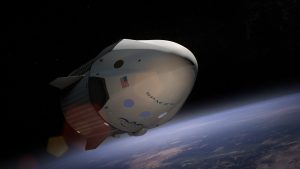 SpaceX has successfully tested a hexagonal heat shield intended for its Starship passenger spacecraft. Over the weekend, CEO Elon Musk announced on Twitter that his company had exposed the Starship the new heat shield to heat similar to that of reentry, with the passenger spacecraft holding up throughout the process. While this doesn’t necessarily mean that SpaceX is ready for a manned mission, it attests to the company’s innovation while putting SpaceX one step closer to transporting astronauts to and from the International Space Station.
SpaceX has successfully tested a hexagonal heat shield intended for its Starship passenger spacecraft. Over the weekend, CEO Elon Musk announced on Twitter that his company had exposed the Starship the new heat shield to heat similar to that of reentry, with the passenger spacecraft holding up throughout the process. While this doesn’t necessarily mean that SpaceX is ready for a manned mission, it attests to the company’s innovation while putting SpaceX one step closer to transporting astronauts to and from the International Space Station.
One of the challenges facing SpaceX in developing Starship is overcoming the substantial heat generated by the passenger spacecraft when reentering Earth’s atmosphere. When a spacecraft enters the atmosphere, it travels so fast that it compresses the air in front of it. As the air becomes more and more compressed, it creates heat — a lot of heat. This is why most meteors — along with space debris — burn up before reaching the ground.
During the test, Musk and his team exposed the hexagonal heat shield to temperatures up to 2,510 degrees Fahrenheit — the equivalent to which a typical spacecraft experiences when reentering Earth’s atmosphere. It’s safe to say the test was a success, as the heat shield withstood the potentially metal-melting temperatures.
SpaceX’s next goal is to further assess the physical properties of the tested hexagonal heat shield for signs of stress. While the heat shield didn’t burn up or otherwise succumb to immediate damage, there could be micro stresses present in its structure. Therefore, Musk and his team want to further assess the heat shield before using it in a manned mission.
The hexagonal design is largely responsible for the heat sheild’s success. According to Musk, it prevents hot gases from accelerating too fast, thus lowering the amount of heat generated by the Starship during reentry.
It’s important to note that the hexagonal heat shield is only designed to protect the Starship during reentry and not the Super Heavy booster rocket. The Super Heavy booster actually doesn’t need a heat shield since it’s made of stainless steel and travels slower than the Starship during reentry. As explained by Musk on Twitter, “Super Heavy booster is stainless steel. Since it only goes to around Mach 8 or 9, moreover at high altitude, it needs no heat shield, not even paint.”
To watch a video of the hexagonal heat shield being tested, check out this tweet shared by Musk. It shows the heat shield being exposed to several torches.



